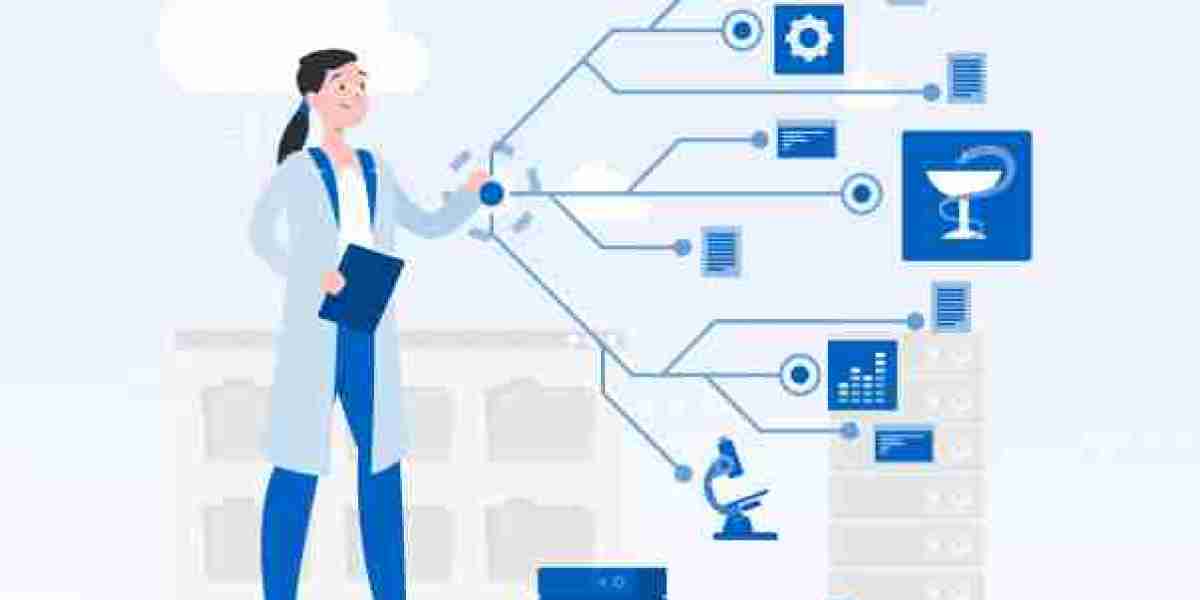The Internet of Things (IoT) has emerged as a groundbreaking technology that is transforming various industries, and healthcare is at the forefront of this revolution. By integrating IoT solutions into healthcare systems, providers can enhance patient care, streamline operations, and improve outcomes. This article delves into the various IoT solutions for healthcare, exploring their applications, benefits, challenges, and future prospects.
Understanding IoT in Healthcare
The Internet of Things refers to the interconnected network of devices that communicate with each other via the internet. In the context of healthcare, IoT devices collect, analyze, and share data related to patient health, medical equipment, and operational processes. These devices range from wearable health monitors to sophisticated hospital equipment, all designed to provide real-time data and insights.
Key Components of IoT Solutions in Healthcare
Wearable Devices: These include smartwatches, fitness trackers, and medical devices that monitor vital signs like heart rate, blood pressure, and glucose levels. They empower patients to take an active role in managing their health.
Remote Patient Monitoring (RPM): IoT enables healthcare providers to monitor patients outside traditional clinical settings. RPM tools can track patients with chronic diseases, ensuring timely interventions and reducing hospital readmissions.
Smart Medical Devices: These include connected devices like insulin pumps, smart inhalers, and pacemakers that can send real-time data to healthcare providers, facilitating better disease management.
Telehealth Solutions: IoT enhances telehealth by enabling video consultations and remote monitoring, providing patients access to healthcare professionals without the need to visit a facility.
Smart Hospital Infrastructure: IoT solutions are used to optimize hospital operations, including asset tracking, environmental monitoring, and patient flow management. Smart beds can monitor patient conditions and alert staff when assistance is needed.
Applications of IoT in Healthcare
1. Improved Patient Monitoring
IoT devices facilitate continuous patient monitoring, allowing healthcare professionals to track vital signs and health metrics in real time. For instance, wearable heart monitors can alert doctors to irregular heartbeats, prompting immediate intervention. This proactive approach not only improves patient outcomes but also enhances patient engagement by allowing individuals to monitor their health actively.
2. Enhanced Chronic Disease Management
Chronic diseases such as diabetes and hypertension require ongoing management. IoT solutions can help patients adhere to treatment plans through reminders, medication tracking, and real-time feedback on their health status. For example, smart glucose meters can send data to healthcare providers, allowing for timely adjustments in treatment based on real-time glucose levels.
3. Telemedicine and Virtual Care
Telemedicine has gained significant traction, especially following the COVID-19 pandemic. IoT enables seamless virtual consultations, allowing patients to receive care from the comfort of their homes. IoT devices can provide healthcare providers with vital information about a patient’s condition, enhancing the quality of care delivered during virtual visits.
4. Asset and Inventory Management
Hospitals face challenges in managing their medical equipment and supplies efficiently. IoT solutions can track the location and usage of medical devices, ensuring that equipment is available when needed and reducing the chances of loss or theft. Real-time inventory monitoring can help healthcare facilities maintain optimal stock levels, reducing waste and ensuring that critical supplies are always available.
5. Predictive Analytics for Patient Care
IoT devices generate vast amounts of data that can be analyzed to identify trends and patterns in patient health. Predictive analytics can help healthcare providers anticipate potential health crises, allowing for preventive measures to be implemented. For instance, analyzing data from wearables can help identify patients at risk of heart disease, enabling early interventions.
Benefits of IoT Solutions in Healthcare
1. Enhanced Patient Engagement
IoT empowers patients to take control of their health by providing them with access to their health data. This transparency fosters greater engagement in treatment plans, leading to improved adherence and outcomes.
2. Increased Operational Efficiency
By automating processes and improving data management, IoT solutions streamline healthcare operations. Healthcare providers can allocate resources more effectively, reducing costs and improving service delivery.
3. Improved Care Coordination
IoT devices facilitate seamless communication between patients and healthcare providers, enhancing care coordination. This is particularly important for patients with complex health needs who require input from multiple specialists.
4. Data-Driven Decision Making
The data generated by IoT devices provides healthcare professionals with valuable insights into patient health and operational efficiency. This data-driven approach enables more informed decision-making and enhances the overall quality of care.
5. Reduced Healthcare Costs
IoT solutions can help reduce healthcare costs by minimizing hospital readmissions, optimizing resource usage, and improving preventive care. By addressing health issues early, providers can prevent costly complications down the line.
Challenges of Implementing IoT in Healthcare
1. Data Security and Privacy Concerns
One of the most significant challenges of IoT in healthcare is ensuring the security and privacy of patient data. With the increasing number of connected devices, the risk of data breaches and unauthorized access also rises. Healthcare organizations must implement robust security measures to protect sensitive information.
2. Integration with Existing Systems
Integrating IoT solutions with existing healthcare systems can be complex. Many healthcare facilities still rely on legacy systems that may not be compatible with new technologies. Ensuring seamless interoperability is crucial for the successful implementation of IoT solutions.
3. Regulatory Compliance
Healthcare is a heavily regulated industry, and organizations must navigate various compliance requirements when implementing IoT solutions. Ensuring that devices and applications meet regulatory standards is essential to avoid legal issues.
4. High Initial Costs
The initial investment required for IoT solutions can be significant. Healthcare organizations must carefully evaluate the potential return on investment to justify the costs associated with implementing and maintaining these technologies.
5. Training and Adoption
Healthcare professionals must be trained to use new IoT devices and applications effectively. Resistance to change and lack of familiarity with technology can hinder the adoption of IoT solutions in healthcare settings.
Future Prospects of IoT in Healthcare
The future of IoT in healthcare looks promising, with continuous advancements in technology and increasing acceptance of digital health solutions. Several trends are likely to shape the landscape of IoT in healthcare in the coming years:
1. Increased Focus on Patient-Centric Care
As healthcare shifts towards a more patient-centric model, IoT solutions will play a pivotal role in empowering patients. Personalized health monitoring and treatment plans tailored to individual needs will become more prevalent.
2. Advancements in Artificial Intelligence (AI)
The integration of AI with IoT will enhance data analysis capabilities, enabling more accurate predictions and personalized treatment recommendations. AI algorithms can analyze data from multiple sources, improving decision-making in patient care.
3. Expansion of Telehealth Services
The demand for telehealth services will continue to grow, driven by the convenience and accessibility they offer. IoT will facilitate the expansion of these services, enabling more comprehensive remote care.
4. Integration with Blockchain Technology
Blockchain technology can enhance the security and interoperability of IoT devices in healthcare. By providing a secure and transparent way to share patient data, blockchain can address some of the security concerns associated with IoT.
5. Increased Collaboration and Partnerships
Collaboration between healthcare providers, technology companies, and regulatory bodies will be crucial for advancing IoT solutions in healthcare. Partnerships will facilitate knowledge sharing and drive innovation in the industry.
Conclusion
IoT solutions have the potential to revolutionize healthcare by enhancing patient care, improving operational efficiency, and reducing costs. As technology continues to advance, the integration of IoT into healthcare systems will become increasingly seamless, enabling more personalized and effective care. However, healthcare organizations must navigate challenges such as data security, regulatory compliance, and integration with existing systems to fully realize the benefits of IoT. By addressing these challenges and embracing the opportunities presented by IoT, the healthcare industry can transform the way care is delivered and improve patient outcomes for generations to come.



